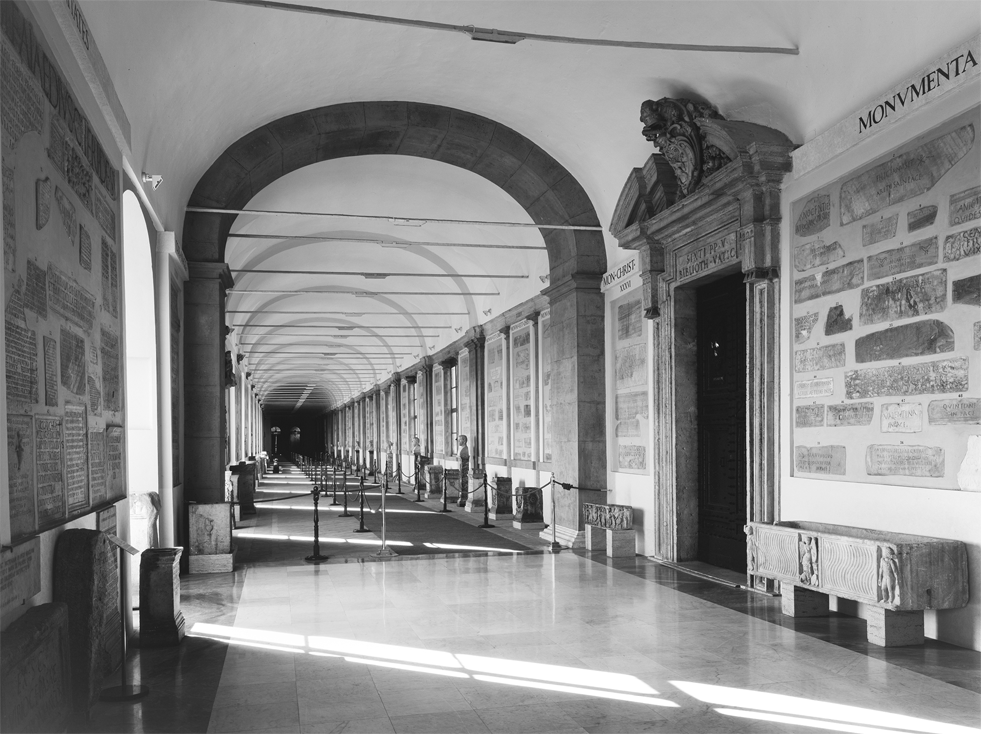Страна:
Регион:
Другие названия:
Значение:
Время визита:
Описание:
The Lapidary Gallery, home to the richest lapidary collection in the Vatican, occupies the southern part of the long corridor created to link the Vatican Palace with the Belvedere Palace, and was formerly called the Ambulacrum Iulianum, from the name of Pope Julius II (1503–1523), or the “Bramante corridor”, referring to the name of the architect who designed it. The primary nucleus of the collection, initiated organically by Clement XIV (1769–1774), founder of the Clementine Museum, had already been arranged in 1772 in the northern part of the Ambulacrum and was subsequently enriched by acquisitions by the pontiffs Pius VI and Pius VII and by donations from private collections (Zelada, Galletti, Rusconi, Marini). When Pius VII decided to create the present-day Chiaramonti Museum, the stones were detached from the walls between 1805 and 1808 and transferred to the present-day Gallery, which during the same years was also enhanced by the arrival of numerous newly-acquired epigraphs. The curator of the new display was Gaetano Marini, co-adjutor of the Prefect of the Vatican Archive from 1772, Prefect from 1798, and first Custodian of the Apostolic Library from 1800. Why was a librarian chosen as the the curator? The epigraphic collection was still within the competences of the Library: the lapidary inscriptions were assimilated within the collection of manuscripts and printed documents as a source of information. Indeed, the Gallery constituted a real “stone library”, vestibule to the library itself (the old entrance to which is located in the Gallery), containing more than 3400 “pages”, written on slabs, bases, memorials cippi, urns, altars and sarcophagi, dating from between the 1st century B.C. and the 6th century A.D. Distributed over 48 walls (some of which were arranged after Marini) according to content — religion, emperors, consuls and magistrates, army, professions and trades, family and society, Christianity, and the Ostia excavations — they constitute an important source of knowledge on many aspects of the antique and late-antique world: populations, nations, international relations, war, the army and naval forces, administrative, legal and economic structures, the names of people and biographical summaries (careers, professions), social classes, personal and collective religiosity and spirituality, honours bestowed upon the living and the commemoration of the deceased, private and public acts of munificence in social, religious and building fields, the worship of the dead and of the tomb, testaments, private and public forms of associational life, notices, indications, prohibitions, signs, inventories, and topographical data. Sarcophagi, altars and bases are also displayed on the floor.
Latin captions accompany the walls, dating partially from Marini’s display; these are numbered (with Roman numerals), entering from the Chiaramonti Museum, in descending order, alternating even numbers on the right and odd numbers on the left.
Категории:
Метки:
Зачем посещать:
Интерес:
Физподготовка:
Лучшее время:
Доступ:
Roads:
Facilities:
Open:
Clothing:
Seasonable
Connection:
Ok

